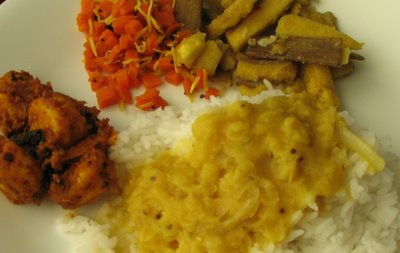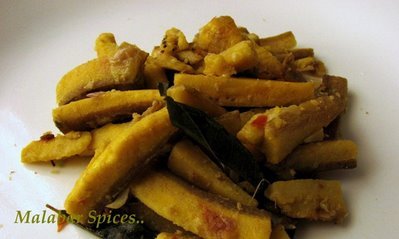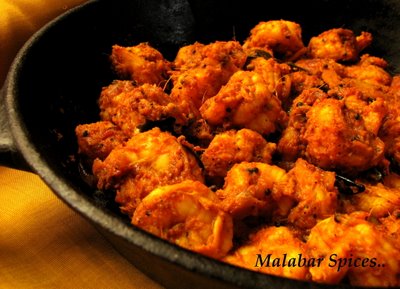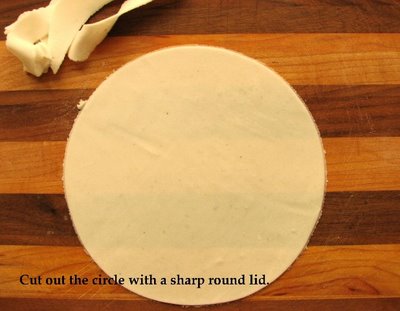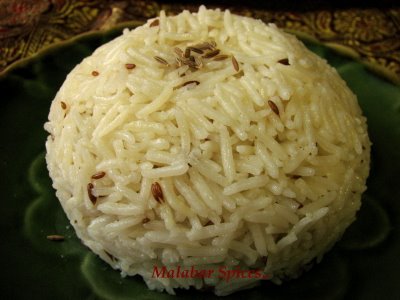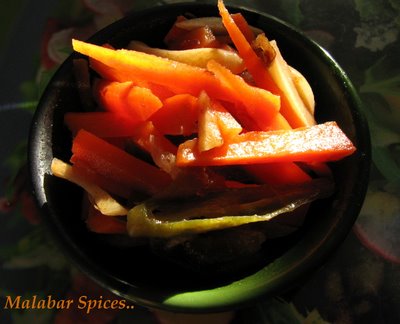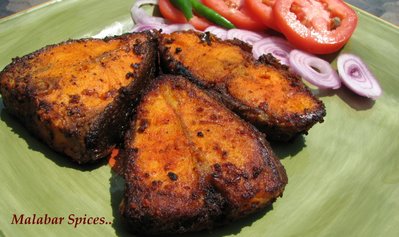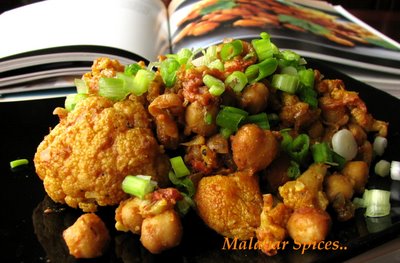
Kalthappam is a not so well known bread/cake/appam from the Malabar households. The texture is somewhere in between that of bread and cake so I don’t really know where to classify it. It is a baked/steamed mixture of ground rice, sweetened with jaggery(unrefined sugar) and has crunchy bits of chopped coconut to add texture.
Maybe it originated as baked version of Neiyyappam, that yummy fried fritters made of a similar mixture. Unniappams are also similar,but kalthappams are not so moist.
At my house, mom makes it as a snack for those in between times, when you are walking around, raiding the refrigerator, looking for something to satisfy the munchies. I make it once in a while and eat it as a snack as well as breakfast.It is healthy as it doesn't have any eggs or butter or too much sugar.
The taste is unique due to the shallots, coconut oil and coconut pieces. Shallots (I may have mentioned earlier too) balance the sweetness and is essential to the taste. Though the idea is foreign to one who hasn’t tasted it, using shallots in sweet dishes is similar to using spices in cakes.
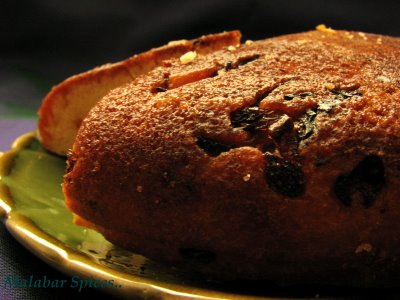
You will need:
Basmati/Biryani Rice -2 cups soaked for 6 hours.
Cooked rice (same rice as above) -1 cup
Jaggery – 1 ½ to 2 cup
Baking powder -1 teaspoon
Salt -a pinch
Coconut oil -2 or 3 tablespoons
Chopped Coconut Pieces -1/4 cup finely chopped
Shallots/ Red pearl onions -1/4 cup finely chopped
Preparation:
1. Melt the jaggery in 1/2 cup of water and allow it to cool. The quantity of jaggery to be used usually depends on the sweetness of the jaggery. If there is more water inadvertently, let it thicken over low heat. Strain it and use this liquid while grinding the rice. The thicker the jaggery water, the easier it would be to grind the rice without additonal water.
2. Drain the soaked rice and mix it with the cooked rice. Grind the rice and the cooked rice together to a fine consistency with the jaggery water. Do not add water unless absolutely neccessary and even add little at a time. The final consistency should be thicker than a pancake or dosa batter.
3. Then add salt, baking powder, and few chopped coconut pieces and mix well. In a pressure cooker (or a heavy bottom pan/cast iron deep skillet) heat the coconut oil and add the remaining chopped coconut and shallots. Saute for about a minute on medium heat till the shallots turn golden brown.
4. Pour the lukewarm rice mixture into the cooker. Close cooker and remove the weight. Cook for 2 minutes on a high flame. Next lower the flame and cook for 15-20 minutes on an extremely low flame. Remove from fire and open the lid after 5minutes. 5. When it is a bit cool, run a blunt knife along the edges to loosen the appam and remove from the cooker. The bottom would be dark brown with the onions and coconuts while the top is a honey brown. The final texture should be of deep crevices and tunnels vertically. Store in the refrigerator for upto 3-4 days.
P.S. It is recommended to get the whole ground rice mixture a little warm before you pour it into the cooker to distribute the heat evenly top to bottom. Whenever I tried warming the mixture on the flame, I ended up cooking it so either I do without it (grinding it in the processor makes it warm) or I heat the whole mixture in the microwave for about 15-20 seconds.
A Disclaimer: The kind of rice you use to make this decides the texture of this appam. I think basmati (I used Pari this time) would be fine, but again there are lots of basmati out there. I have had disasters with this earlier, with it being sticky, not rising, getting over burnt and so on.
Also, it cooks better on stove top. I tried baking it and didn’t like the texture. The pressure cooker is the best but if you are using a pan, it has to be at least 2 inches deep and have a thick bottom to prevent burning. So have patience and try it. I still can’t make it as well as back home but I will keep updating this post with inputs whenever I make it.
If anybody has more experience making it, please leave your suggestions and comments.
This is my Entry for - WBB #7/Baking for Breakfast hosted by Nandita of Saffron Trail.
RP just reminded me of the JFI event which had slipped my mind, so this is my entry for the JFI-Jaggery Hosted by the lovely Kay of "Towards a Better Tomorrow" as well.
